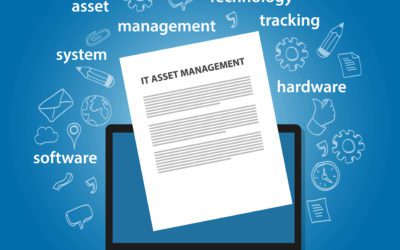Eight Ways to Scale Up for Success
If you’re a small business transitioning to more than 20 employees, congratulations! You’re reached a “catching the brass ring” moment, where vision and performance are converging to take your business to the next level. But with all growth comes growing pains. For small companies that are officially transitioning to “medium sized,” those growth pains come with creating the right IT infrastructure for medium-sized business. After all, IT solutions for small and medium business can differ significantly.
Is your IT infrastructure up to the challenge your growth can bring?
IT Infrastructure for Medium-Sized Business: How to Know When Scale Up Your Operation
it’s a rare company indeed that can transition from being a small start up to being a medium-sized enterprise, without making major changes to their network and systems. Companies simply need to increase the capacity and security of their networks, the more work is handled on them. But how do you know when to pull the trigger on IT investment for your growing business?
If you are experiencing—or anticipate experiencing—these business conditions, the time has come to invest in IT solutions for medium-sized businesses. Ask yourself these questions:
- Am I having to turn away customers because I don’t have the product or bandwidth to serve them?
- Am I anticipating a big bump in hiring?
- Will I be adding products or locations that will require me to handle more data on my network?
- Will I be adding more remote employees, or be moving an existing base of employees remote?
- Is my company moving into a business area where there are strict regulations on data handling or cybersecurity? (Fintech, Healthcare/HIPAA, or contracting for the government, for instance.)
- Is my company falling short of federal recommendations for cybersecurity, in general? (See Shields UP directive)
- Has my company, at any time, had a difficult time handling processing and handling of transactions, maxed out network speeds, or failed to have adequate backup?
If the answer to any of these questions is yes, then it’s time to consider upgrading to IT infrastructure for medium-sized businesses. When companies make the leap to more mid-sized, enterprise level solutions, there are specific areas we recommend they address. Here’s some of the areas we look at first.
Scaling Up IT Infrastructure Solutions for Medium-Sized Business: Our Recommendations
Scaling up is all about taking your company to the next level. But also, scaling up is about laying a ground work for your future—a foundation that will allow you to expand as your company expands. If you haven’t installed these tools, or adopted these techniques already, the time to consider them is now.
#1—Tools for Transparency
Smaller companies have smaller staff that tend to see each other or talk to each other daily. Issues like version control for documents, having shared file directories, or communicating with far flung offices is usually not a problem. Everyone knows what’s happening, by default.
Not so in a medium-sized business. Now is the time to install shared tools that can increase your company’s productivity and transparency. Specifically, we recommend a shared file library, such as SharePoint, where all your employees can collaborate on documents in real time. SharePoint also gives you the opportunity to create department or whole company portals. Here you can share company news, create links to important documents and forms, and share job openings and social media feeds. You can even create special interest groups in the company, and use the portals for sharing information.
But there are far more tools for IT infrastructure for medium-sized businesses Can you make your accounting platforms, for instance, more integrated with employee experience? Can you create portals for customers to see the progress of their orders? What processes can you offload to software as a service companies, instead of doing in house? The answers can improve your service, speed and transparency in ways you may not have yet imagined.
#2—IT Infrastructure for Medium-Sized Business Needs Written IT Processes
Who has the responsibility for what in your IT organization? If you have internal staff, are they outsourcing any of the IT functions to a managed service IT provider (MSP) or a consultant? If so, are those roles and responsibilities clearly defined in writing? As your company transitions in size, this is a good time to examine all your IT needs and processes. Most companies find that as they put all this on paper, the holes in their operation become apparent. All the better time to bolster what’s weak, and add for the future.
#3—Cybersecurity Incident Management Protocols
Do you know what would happen if your organization got hacked, and information got leaked? Who’s responsibility is it to clean up the breach? Who will report it to the government, or to users who are affected? What happens if something important in your network breaks after hours? Who fixes what, when? By working through every scenario, you’ll be prepared to keep your business running when the going gets tough—whether that be from a cyber attack, or a natural disaster, or an unplanned outage. Your internal IT staff as well as your contractors should collaborate to get processes written down, and roles defined. A good cybersecurity assessment is also a good idea. A qualified MSP can help you with this process.
#4—Automate, Automate, Automate
Software tools abound, especially when it comes to IT services for small and medium-sized businesses. Providers like Amazon Web Services and Microsoft Azure have dozens of cloud-based software tools that can help you automate everything from accounting, to customer service, and more. If you haven’t explored some of these options yet, you could be missing out on not just the automation of the process, but the improved reporting and data tracking they offer. Talk to your MSP about solutions that might be right for you.
#5—Take IT Admin to the Cloud
The more employees you have, the more software licenses, hardware and training programs you have to manage. The good news is, there are IT admin programs that will allow you to see your activity and licenses in the macro. From one central database, you can add users, add licenses, track your hardware and expenses. In most cases, this is a dashboard you can share with your MSP. Ask them for more ways you can streamline your IT administration, and co-manage your IT operation.
#6—BYOD Policies
If you’ve been relying on company-issued phones and computers up to now, it may be time to switch to bring-your-own-device (BYOD) policies. Why? Because employees need the option to work remotely and being able to transition seamlessly from work to personal issues on their own phones and tablets are a big part of this. It’s not enough to just allow this practice. Formal policies must be written, and cybersecure authentication and virtual private networks practices need to be established to keep your data safe. A standard BYOD policy is a must for growing organizations, and it should be discussed during onboarding. Employee training about cyber hygiene and password/login protocols should be part of standard and ongoing cybersecurity training.
#7—Cybersecurity Upgrades
Is your system being monitored around the clock? Many companies say yes. But in fact, their systems are being checked by bots or scanners, not humans. If you don’t have live, 24 hour-a-day surveillance, you may be surprised to learn that you’re only getting a security scan every few hours by an AI scanner.
If this is your company, it’s time to upgrade to a monitoring package, and layer on tools such as SIEM (Security Information and Event Management) and EDR (Endpoint Detection and Response). You’ll be able to get an executive view of your logs, detect bad actors in your system faster, and create detailed reports of any criminal activity that you can take to prove a claim to your cyber insurer.
But these are only two tools that can bolster your cyber security. There are many more. Check out our latest cybersecurity cheat sheet, to look at all the products Iconic offers for cybersecurity. And if you’re looking to find the holes in your cybersecurity lineup, check out this handy DIY Cybersecurity Checklist.
#8—Build Up your Storage and Backup
IT services for small and medium-sized businesses often include packages for cloud-based file storage and back up. But is your backup truly secure, and up to the challenge that might come with increased data flows? If you’re about to undergo a corporate growth spurt, you can’t afford to ignore this question.
If you’ve been backing up your data to a separate server in your offices, you are putting your data at risk from natural disasters and outages, as well as cyber thieves. With this setup, hackers that infect your network, can easily infiltrate your backup servers, too. That’s why we recommend every company have an offsite backup plan. In most cases, that backup would go to a cloud-based server. It’s not unreasonable to double up on your backup. And we generally recommend “immutable” backup services, which create files that can’t be erased. In the event of a ransomware attack or natural disaster, you can have your systems up and running again in minutes.
Contact Us to Scale Up Your IT Infrastructure for Medium-Sized Business
We have plenty of IT services for small and medium-sized business, providing full service IT consulting and management. But for medium-sized businesses, we offer a variety of co-managed services that allow us to work directly with your growing IT department. We’d love to talk to you about the premium IT infrastructure for medium-sized business we offer. Contact us, for a free consultation!



